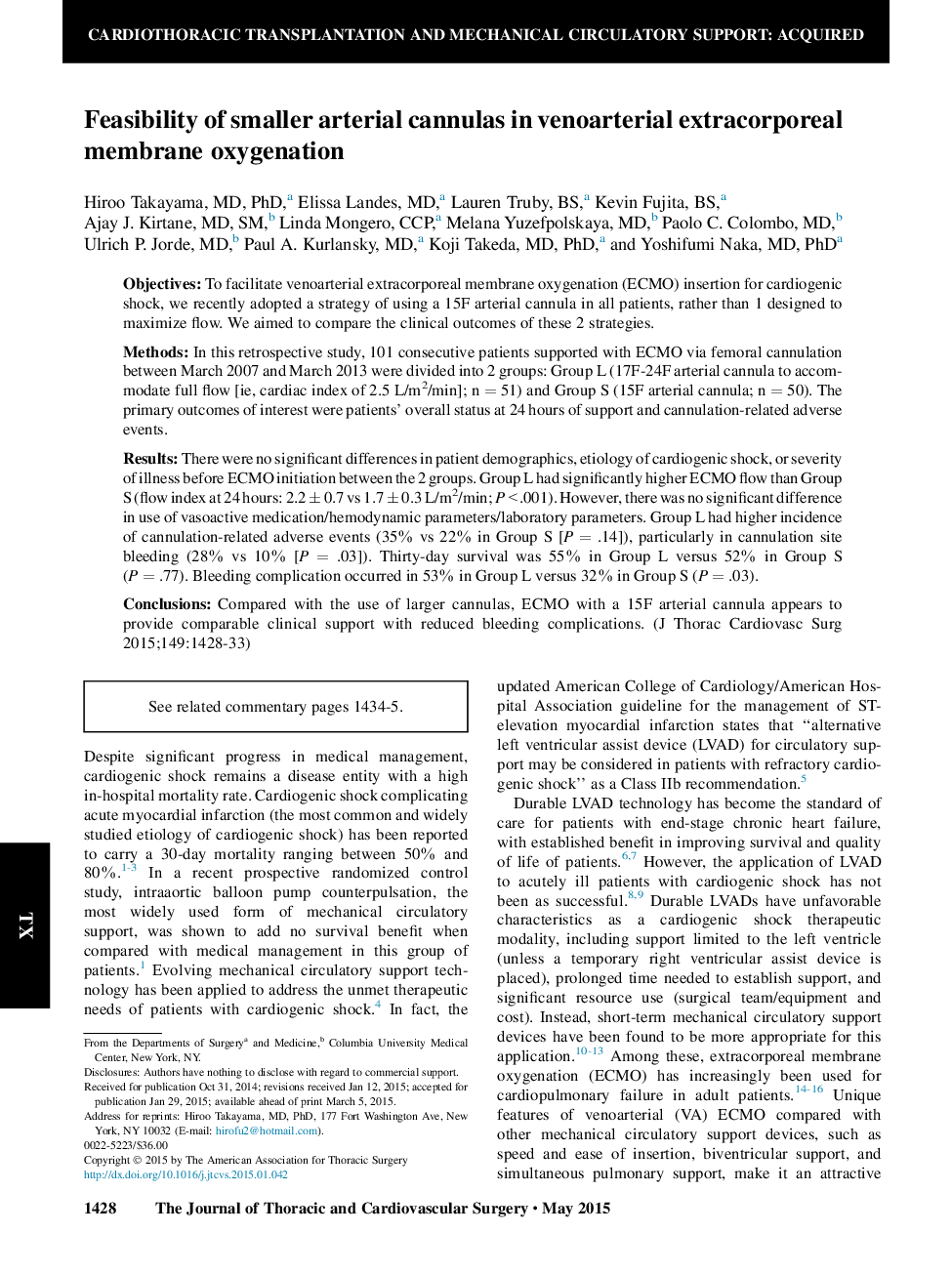| Article ID | Journal | Published Year | Pages | File Type |
|---|---|---|---|---|
| 2979590 | The Journal of Thoracic and Cardiovascular Surgery | 2015 | 6 Pages |
ObjectivesTo facilitate venoarterial extracorporeal membrane oxygenation (ECMO) insertion for cardiogenic shock, we recently adopted a strategy of using a 15F arterial cannula in all patients, rather than 1 designed to maximize flow. We aimed to compare the clinical outcomes of these 2 strategies.MethodsIn this retrospective study, 101 consecutive patients supported with ECMO via femoral cannulation between March 2007 and March 2013 were divided into 2 groups: Group L (17F-24F arterial cannula to accommodate full flow [ie, cardiac index of 2.5 L/m2/min]; n = 51) and Group S (15F arterial cannula; n = 50). The primary outcomes of interest were patients' overall status at 24 hours of support and cannulation-related adverse events.ResultsThere were no significant differences in patient demographics, etiology of cardiogenic shock, or severity of illness before ECMO initiation between the 2 groups. Group L had significantly higher ECMO flow than Group S (flow index at 24 hours: 2.2 ± 0.7 vs 1.7 ± 0.3 L/m2/min; P < .001). However, there was no significant difference in use of vasoactive medication/hemodynamic parameters/laboratory parameters. Group L had higher incidence of cannulation-related adverse events (35% vs 22% in Group S [P = .14]), particularly in cannulation site bleeding (28% vs 10% [P = .03]). Thirty-day survival was 55% in Group L versus 52% in Group S (P = .77). Bleeding complication occurred in 53% in Group L versus 32% in Group S (P = .03).ConclusionsCompared with the use of larger cannulas, ECMO with a 15F arterial cannula appears to provide comparable clinical support with reduced bleeding complications.
